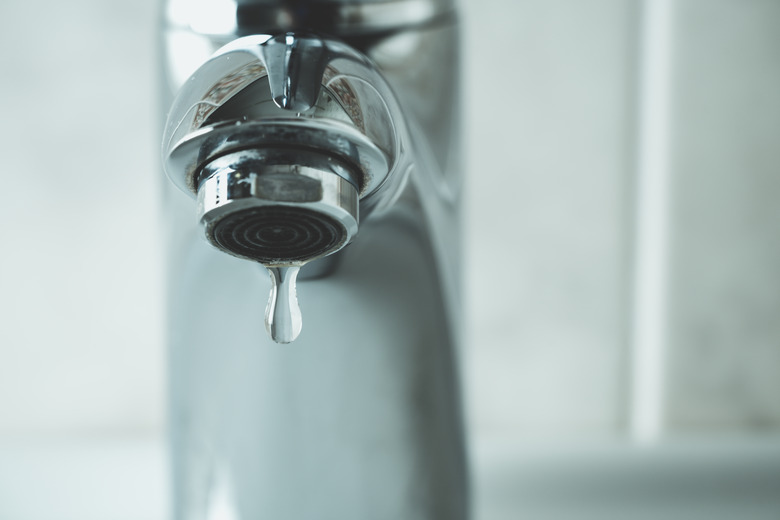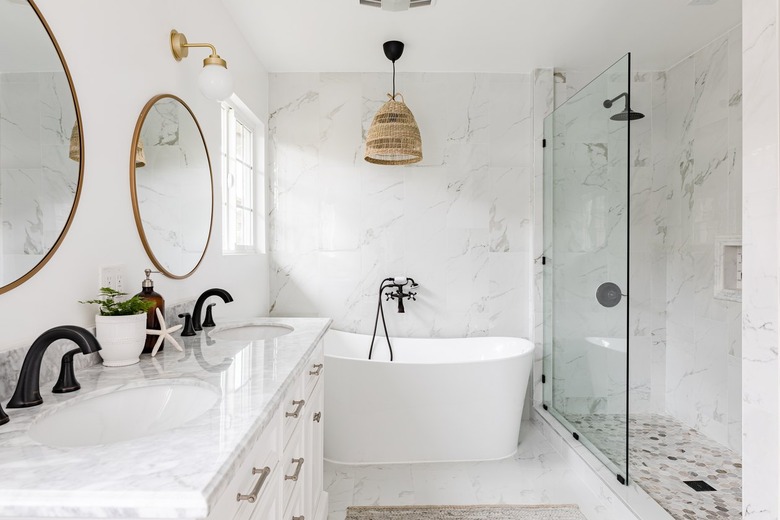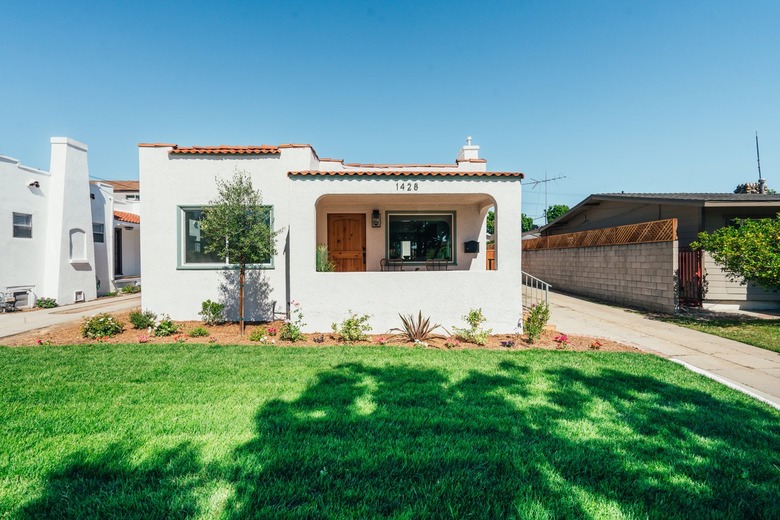The 10 Best Water Conservation Tips For Droughts — Or Anytime
We may receive a commission on purchases made from links.
Water conservation is a very important part of resource management. It's easy to take water for granted since our country seems to have an endless water supply, but that simply isn't true in this time of drought conditions and climate change. While it's up to the government to set rules encouraging frugal use of water, each of us can help by conserving water in our own home (which, in turn, can also help us save on our water bill). There are more than a few easy steps homeowners and renters can take to conserve water in their daily routine.
1. Test for Hidden Leaks
If the term "water waste" makes you imagine overflowing swimming pools, you may be surprised by the amount of water wasted in household leaks. Household leaks in and of themselves cause almost a trillion gallons of water waste annually. You can determine if your home has leaks by checking your water meter before and after a two-hour period when you don't use any water. If the second meter shows water use during the two-hour period, you probably have a leak or two. Another way to test is to check your monthly water consumption in a winter month. If you are part of a family of four and you use more than 12,000 gallons, your home is leaking somewhere.
2. Fix Your Leaky Faucets
2. Fix Your Leaky Faucets
The United States Environmental Protection Agency has identified a week in March as "Fix a Leak Week," but you can apply the same principles to any week. While some household leaks may be difficult to locate, leaking faucets are not, which makes them a great place to start. If a faucet releases just one drip every second, the water waste can total more than 3,000 gallons in 12 months, which is enough water to supply more than 180 showers. Examine each faucet for leaks, including those inside and outside the house, looking for both telltale drips and/or moisture on the pipe surface. If you need to replace the faucet, it's a good idea to install water-wise faucets.
3. Check for Toilet Leaks
3. Check for Toilet Leaks
While faucet leaks are easy to find and easy to fix, there are many other leak sources in a typical home. One frequent source of leaks is the bathroom toilet. Check your toilet for leaks with this test: Put a few drops of blue or red food coloring in the toilet tank. Wait 10 minutes and see if any colored water has leaked into the bowl. If so, you'll need to get those leaks fixed as part of your water conservation program. It may be as simple as replacing an aging toilet flapper, or valve seal.
4. Repair Showerhead Leaks
4. Repair Showerhead Leaks
A showerhead doesn't usually drip to the same extent that a faucet does, but if a turned-off shower has even 10 drips of water a minute, you'll waste over 500 gallons of water every year. Many leaky shower issues can be easily solved by either replacing the showerhead or using plumbers' pipe tape (Teflon tape) in the connection between the showerhead and the pipe stem. If it's a more complex issue that is causing the drip, get up to speed on shower plumbing and fix it yourself or else call in a plumber.
5. Use Shower "Warm-Up" Water
5. Use Shower "Warm-Up" Water
If you let the shower run a bit before you climb in to let the water warm up, you are not alone, but the cooler water can serve a good purpose too. One great use for the warm-up water is irrigating houseplants. Put the thirsty plants in the shower before you turn on the water and then be prepared to take them out as the water gets warmer. Both you and your plants will be happy with the end result. Another simple water conservation tip is to turn off the bathroom sink water when you brush your teeth or wash your hands.
6. Time Your Showers
6. Time Your Showers
Everybody deserves a long, relaxing bubble bath from time to time, but think through the water waste before making baths your go-to method of getting clean. The typical bath uses 40 or 50 gallons of water, while a 10-minute shower with a water-saving shower nozzle uses only 20 gallons. Shorter showers mean more water conservation, and that adds up day after day, family member after family member. Time your shower if necessary to keep the time on the shorter side.
7. Change Your Toilet/Showerhead
7. Change Your Toilet/Showerhead
Newer appliances are built with water conservation in mind, and this can make a big difference in certain parts of your home. One of these is the bathroom toilet. Older toilets (those manufactured 30 years ago or more) generally use between 2 and 6 gallons per flush. Compare this with modern toilets that meet the federal standard of 1.8 gallons per flush. Over time, that's a lot of water saved. A toilet with a dual-flush feature is even more efficient, allowing the user to select a light flush that uses less water when appropriate. In the same vein, a low-flow showerhead cuts the standard 5 gallons per minute water rate in half. You can also buy water-saving filters for your swimming pool.
8. Run Full Loads
8. Run Full Loads
Yes, there are washing machines and dishwashers that sense how full your load is and provide only that much water. Even so, you'll save water by running these machines only when they are full. Completely fill clothes washers or dishwashers to get the most from the water. For dishwashers, forget the habit of rinsing the dishes beforehand since it wastes water. Just let the machine do its job.
9. Check for Outdoor Leaks
9. Check for Outdoor Leaks
Gardens need water, but a faulty sprinkler system can cause lots of unnecessary water waste. In-ground drip irrigation systems are generally water-efficient, placing the water just where it needs to go without flooding nearby areas like a sprinkler might do. However, those in-ground systems can be victims of winter frost or freezing. Be sure to check it every spring before turning it back on. Even a leak that is 1/32 of an inch in diameter (the thickness of a penny) wastes some 6,300 gallons of water each month. Call in a professional if need be. While you are looking outdoors, check your garden hose for leaks too. You may want to replace the hose washer or tighten the connection with a wrench.
10. Be Water-Wise in the Garden
10. Be Water-Wise in the Garden
There are dozens of steps you can take to cut down on the outdoor water usage in the garden — above and beyond fixing leaks. This includes selecting water-wise plants, like native wildflowers or shrubs for your landscaping. It also includes using rich, organic soil that holds water rather than thin soil that allows it to pass through easily. If you'd really like to go above and beyond, add in a rain barrel to your landscape to collect water for lawn and plant care.
Traditional green lawns surrounding the house used to be part of the American dream, but they just don't work well with water conservation. Lawns are always thirsty, so use best watering practices and minimize the amount of backyard you use for green grass. Try native grasses instead or use drought-tolerant ground cover.
Water your plants in the morning to avoid water loss from evaporation. If you absolutely can't do so, water in the evening after the heat of the day has passed. In addition, add a layer of organic mulch around shrubs and trees to hold water in the soil and prevent temperature extremes in the soil. Mulch also keeps weeds down naturally and ultimately decomposes into the soil.


